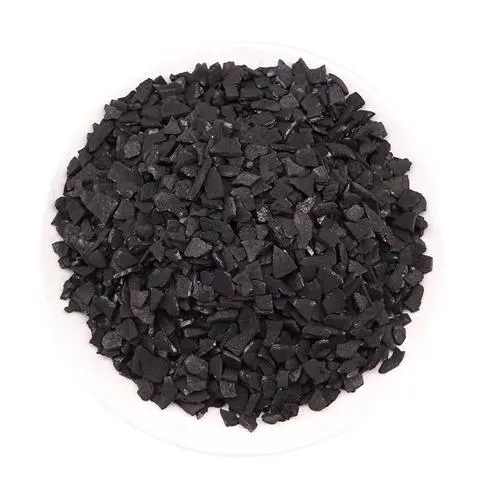Sodium-ion batteries have demonstrated great potential in large-scale energy storage due to their advantages such as abundant resources, high safety, and excellent low-temperature performance. As the core material of the battery, the negative electrode directly impacts key metrics such as energy density, cycle performance, and initial Coulombic efficiency. Hard carbon, with its unique disordered crystal structure and abundant pores, has become the preferred negative electrode material for sodium-ion batteries. Its graphite interlayers, closed micropores, and surface defect sites enable efficient sodium storage, offering high capacity advantages. Currently, the key to industrialization lies in the selection of hard carbon precursors.
Commonly used hard carbon precursors include bio-based polymer materials such as coconut shell, starch, bamboo, and straw, as well as chemical raw materials like anthracite, asphalt, and phenolic resin. Hard carbon products derived from different precursors exhibit notable performance variations, and their cost structures differ significantly due to varying raw material sources.
This article analyzes the four mainstream biomass precursors — coconut shell, starch, bamboo, and straw — to evaluate their respective advantages and disadvantages!
1 Coconut Shell: High Performance but Import-Dependent

Advantages: Highly porous, low ash content, mature industrialization.
Coconut shell, the inner husk of coconuts from palm trees, is used in activated carbon, crafts, and the new energy battery industry. Japan’s Kuraray has commercialized coconut shell-based hard carbon, employing processes like carbonization, crushing, alkali treatment, heat purification, and CVD.
Disadvantages: Limited supply, reliance on imports:
Domestic production is insufficient and of lower hardness: Coconuts are primarily grown in Indonesia, the Philippines, Sri Lanka, and India. China’s main production is in Hainan (99% of domestic output), but annual production meets only about 6GWh of battery demand, far below future sodium-ion battery needs. Coconuts from Hainan have lower hardness due to weaker sunlight compared to tropical regions.

Import risks: Since late 2024, prices for carbonized coconut shells have surged, causing supply chain instability for domestic companies.
Low yield: The production yield of hard carbon from coconut shells is only 20%-25%, with 1GWh of batteries requiring approximately 1,500 tons of hard carbon, demanding vast raw material quantities.
2 Starch: Abundant Sources but Complex Processing

Advantages: Stable market, low cost.
Starch, one of the most abundant renewable biomaterials (from corn, sweet potatoes, etc.), offers wide availability and no single-supplier risk. As a typical polysaccharide, starch has high carbon content and low cost. Its natural spherical morphology makes it a competitive precursor for hard carbon, with better consistency (fewer impurities) than coconut shells and biodegradability, giving it an edge in environmental friendliness.

Disadvantages: Complex synthesis, higher costs:
Starch is a high-purity organic polymer. While it enables tailored hard carbon morphologies through specific synthesis methods, the process is intricate. For example, China’s BSTR uses starch and other biomass materials, involving steps like modification, pyrolysis, carbonization, and surface treatment, which drive up costs.
3 Bamboo: Renewable Resource with Active Carbon Industry Involvement

Advantages: Fast growth, abundant resources, mature processing.
Bamboo is one of China’s most cultivated, economically valuable bamboo species, maturing in 5-8 years. It grows widely from the Qinling Mountains to the Yangtze River basin and Taiwan, with some cultivation in the Yellow River region. Its low cost makes it controllable. Hard carbon production from bamboo involves precursor pretreatment, carbonization, and post-treatment, similar to artificial graphite but without graphitization. Active carbon companies like Yuanli Co. have entered the bamboo-based hard carbon market due to overlapping processes (e.g., carbonization).

Disadvantages: Inconsistent raw material quality:
Variations in bamboo age and origin affect impurity levels (ash content: 3-5%). High ash content, caused by soil absorption during growth, necessitates intensive acid washing (repeated or high-concentration treatments).
4 Straw: Abundant but Requires Uniformity Solutions

Advantages: Agricultural waste, ultra-low cost.
Straw, the stem-and-leaf residue of crops like rice, wheat, and corn, is abundant in China (over 1 billion tons annually in 2023). Traditionally used as fertilizer or fuel, it incurs almost no additional cost. Companies like Shengquan Group use solvent-based biorefining to extract lignin and cellulose from straw, creating bio-resins for uniform hard carbon precursors.

Disadvantages: Complex composition, high impurities:
Straw consists of cellulose, hemicellulose, and lignin, with ratios varying by crop and growth conditions. It also contains ash (e.g., SiO₂), inorganic salts, and pesticides, which can form impurity phases during carbonization, degrading electrochemical performance.
Which Biomass Hard Carbon Will Prevail?
From coconut shell’s performance to starch’s purity, bamboo’s abundance, and straw’s cost edge, each precursor has unique strengths. The future hard carbon market will likely embrace a multi-route coexistence.
Hard carbon precursor competition: coconut shell, starch, bamboo, straw, which one has more prospects?
Sodium-ion batteries have shown great potential in the field of large-scale energy storage due to their advantages such as abundant resources, high safety, and excellent low-temperature performance.
As the core material of the battery, the negative electrode directly affects key indicators such as the battery’s energy density, cycle performance, and first Coulombic efficiency. Hard carbon has become the first choice for sodium-ion battery negative electrode materials due to its unique disordered crystal structure and rich pores. Its graphite interlayers, closed micropores, and surface defect sites can efficiently store sodium and have a high capacity advantage. At present, the key to industrialization focuses on the selection of hard carbon precursors.

Epic Powder
As the hard carbon industry evolves, Epic Powder emerges as a trusted partner for advanced material solutions. Specializing in precision powder processing equipment, we enable manufacturers to optimize precursor material preparation with our cutting-edge Jet Mill Systems. For hard carbon producers scaling capacity, Epic Powder delivers the process reliability needed to maintain consistent anode quality. Contact our engineering team to discuss your project specifications.